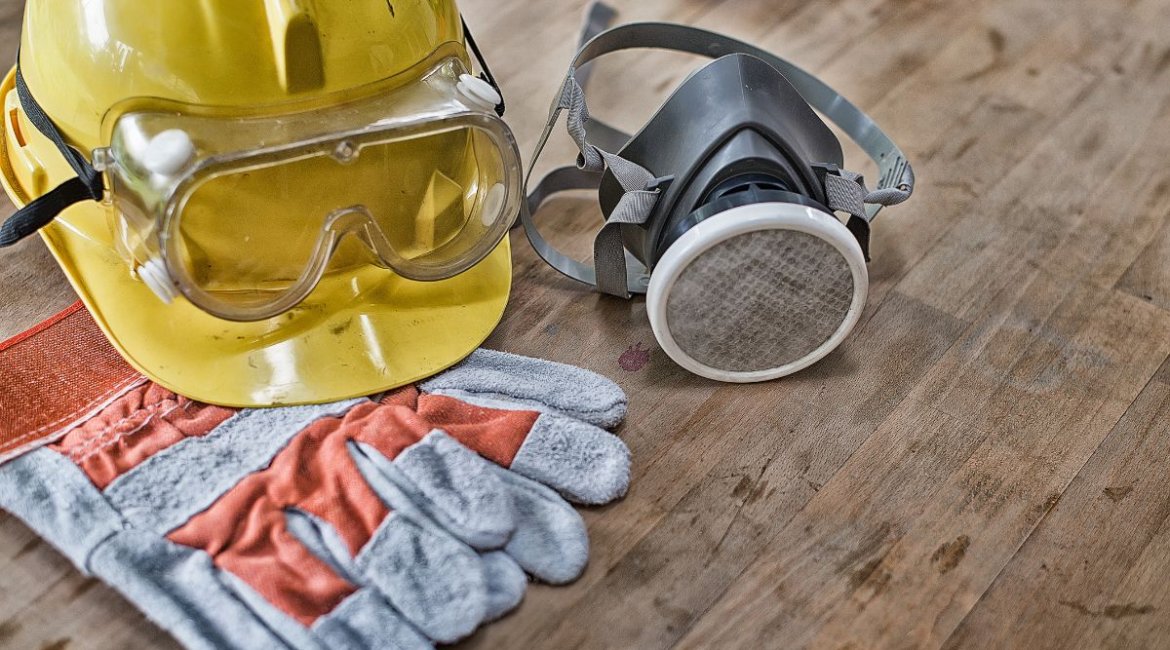Concrete mixers are an essential piece of construction equipment on building sites. Mixers ensure a higher quality mix of concrete, while also saving time and labour. As with any convenient piece of machinery, safety precautions during operation and transport are crucial to both the safety of the operator and to keeping the machine running for longer.
BS Power’s mixers are designed with advanced safety features to enhance operation, protection and mobility. Modern designs of these machines offer features such as covered engine cabins, ring gear covers and pneumatic wheels, making them easier to operate, while improving their robustness.
The safe operation and transportation of these machines can prevent accidents and equipment damage. Users who understand how to employ proper safety protocols are more likely to improve efficiency and extend the life span of their machines.
In this article, we will cover comprehensive safety tips for pre-operation, usage, transport and maintenance of concrete mixers. Users can follow these guidelines to maintain a safe working environment while complying with industry safety standards.
Pre-Operational Safety Checks
The first step to safely operating your concrete mixer is conducting operational checks. Businesses as well as individuals can reduce the risk of instability and injury with proper site preparation. Users should inspect the machine and ensure all protective elements are in place and functioning. Personal injury is completely preventable with the use of PPE.
Users can identify issues with equipment before breakdowns occur. Clear communication of safety procedures prepares operators for safe handling. Pre-use safety checks form the foundation for safe and efficient mixer use. Let’s take a look at pre-operation safety checks users can utilise before starting their project.
Site Preparation And Positioning
The site or area where the concrete mixers will be positioned should be prepared beforehand. Place the concrete mixer on a stable surface which is firm and level. Users can make use of a levelling tool to ensure the spot is level. This step will prevent instability of the machine and potential tipping, which can be disastrous.
The work area should be cleared of any debris or obstacles, which can cause users to trip. It is also important to confirm that the platform or ground can support the weight of the mixer and its components.
The mixer should not be placed in high-traffic zones where it could be a risk for workers. Instead, maintain a clear passage for transporting the mixer safely to the site. Consider the lighting conditions on site for visibility during use. Mixers should not be used in rainy or wet conditions unless properly protected. This could lead to malfunctions in the machine.
Equipment Inspection And Safety Features
What should be inspected before the operation? Users should verify that safety guards and protective enclosures are securely fitted before operation. The drum should be inspected for cracks and hardened concrete debris that could impair function. Hardened concrete stuck to the drum could cause instability of the machine due to the extra weight.
Wheels should be checked for proper inflation or any damage. Make sure that the engine cabin is closed to protect you from exhaust fumes and moving mechanical parts. Operators should test the emergency stop buttons before use. Ensure all bolts and nuts are fastened and examine electrical cords or plugs for wear and damage.
Operator Preparation And Personal Safety
Users often make the mistake of not wearing appropriate safety gear before operating construction machinery. Safety gear, which includes goggles, a dust mask, steel-toed boots, and high-visibility clothing, protects the user from unforeseen accidents.
Operators should avoid wearing loose clothing, which can get caught in equipment. Furthermore, jewellery and long hair are discouraged due to entanglement risk. Project overseers or managers should provide workers with proper training on mixer controls and operations.
Emergency procedures, potential hazards like entrapment or electrical shock risks, should be covered in the training. Operators should understand the mixer capacity limits to prevent overloading the drum. Managers should ensure workers understand how to safely add materials to the mixer without reaching into the drum.

Safe Operation Practices
Safe operation not only protects users but also extends the concrete mixer’s service life. Manufacturer guidelines prevent mechanical failures and accidents, and users should adhere to the guidelines of their specific model. Handling material in a proper manner can ensure the consistency of the concrete quality.
Users should monitor their machine performance as this allows for early detection of problems. The user manual of the machine will specify the distance users should maintain while the mixer is in operation. Users should adhere to these guidelines to prevent injury. The responsible operation of mixers will reduce downtime due to injury.
Starting And Running Concrete Mixers
Before starting the project, run the mixer empty to check for any unusual noises, which can indicate mechanical issues. All guards should be in place when the mixer is switched on. Users should monitor the drum rotation to ensure a consistent mixing quality is maintained.
Avoid overloading the concrete mixer beyond its rated capacity – this can cause damage. Users should not insert their hands or any tools in the drum while it’s rotating. Doing so will lead to injury. Stand a safe distance from the mixer while it’s switched on and rotating. The mixer should never be left unattended while it is in operation.
Material Handling And Mixing
Operators should make use of proper material handling techniques when shovelling cement and sand into concrete mixers. Materials should be measured accurately to achieve a high-quality concrete consistency. Users can inspect the mixture inside the drum for uniformity. Be careful and wear a mask to prevent inhaling the dust.
The mixing area should be kept clean from obstacles and dry to prevent slipping and falling. The engine exhaust gases should be directed away from the user to reduce health risk. Users should inspect the mixer’s drum rotation and ensure its rotation is in the correct direction as indicated by the user manual or operating guide provided by the manufacturer.

Transporting And Mobility Of Mixers On Job Sites
A handy feature of most concrete mixers is the wheels. This allows the mixer to conveniently be towed and transported to and around the site. Utilise the pneumatic wheels when carrying out these actions. The mixer must be secured properly before transportation, and abrupt movement should be avoided when moving.
Maintain stability and don’t take sharp turns when moving the mixer. Make sure the wheels are properly inflated and ensure the operator is trained in safe towing techniques. The mixer can be stored in a secure and dry area when not in use. Storing the mixer correctly will avoid any weather damage.
Post-Operation Procedures And Maintenance
Following a routine post-operation procedure with your concrete mixers preserves the mixer functionality and safety. Damage to the drum can be prevented by cleaning the concrete build-up inside the drum after use. Concrete buildup can affect the mixing quality of the machine. Maintaining concrete mixers on a regular basis allows users to identify wear and tear before failures occur.
Servicing staff should protect themselves by following safety protocols when maintenance takes place. Compliance and operational tracking can be supported by documenting maintenance done on concrete mixers. Services and maintenance on a regular basis reduce breakdowns and extend the machine’s life. Well-maintained concrete mixers will perform safely and reliably on every job.
Cleaning And Housekeeping
How can users keep their concrete mixer clean to extend its life cycle? Firstly, the mixer drum should be emptied after use to prevent concrete from hardening inside. Wash the drum interior and exterior with water while the concrete is still wet. Users can remove all residue in the drum by allowing it to rotate during cleaning.
Secondly, Users should remember to disconnect power sources before any cleaning or maintenance takes place for safety purposes. Clean the surrounding work area from debris or spills.
Thirdly, once the mixer and work site are cleaned, users should store concrete mixers in a dry location to prevent corrosion and damage. Workers should report any wear and tear or damage found on the mixer to personnel to avoid future accidents or failure during operation.
Routine Maintenance Checks
Maintenance checks should be carried out routinely for wear and tear on concrete mixers. Some of the routine checks should include inspecting the belts, clutches and wire ropes. Moving parts such as bearings should be lubricated according to the manufacturer’s instructions. Engine oil, fuel levels and hydraulic fluids must be inspected before each use of the mixer. Any wiring, battery terminals or electrical systems should be inspected for damage.
Ensuring that the emergency stop is operating correctly is crucial before operation takes place. Users can maintain concrete mixers by tightening loose bolts and scheduling periodic professional servicing to maintain optimal performance. These inspections should be carried out on a regular basis to prevent damage to the concrete mixer or any potential accidents and injuries.
Safety Protocols For Servicing And Repairs
A few simple protocols can make the operation of concrete mixers safe and easy to service and repair. Start by disconnecting power to the machine or removing keys. Use lockout procedures to ensure the mixer does not start accidentally. The inspection doors should remain open during maintenance with a dedicated observer present.
Follow the manufacturer’s guidelines strictly for installing or replacing parts. Not all mixers are similar. Users should follow PPE and appropriate tools during maintenance. The concrete mixer’s repair history should be documented for compliance purposes.

Prioritising Safety And Efficiency With BS Power
BS Power’s mixers incorporate safety features which enhance operational safety as well as mobility. Users who adhere to pre-operation checks and routine maintenance will prolong equipment life. Whether the concrete mixer is operated by the owner or personnel, PPE and proper training are essential for protection from hazards such as dust inhalation and mechanical injuries.
Accidents and equipment damage can be prevented by proper storage and safe transportation.
Users should follow strict routines of cleaning the mixer after use to ensure quality concrete mixing. At BS Power, we offer construction and safety feature support for the efficient use of your concrete mixer. Our impressive selection of concrete mixers will not only improve mixing efficiency but also safety on work sites. By integrating these safety protocols, you can streamline your projects by eliminating safety hazards.






